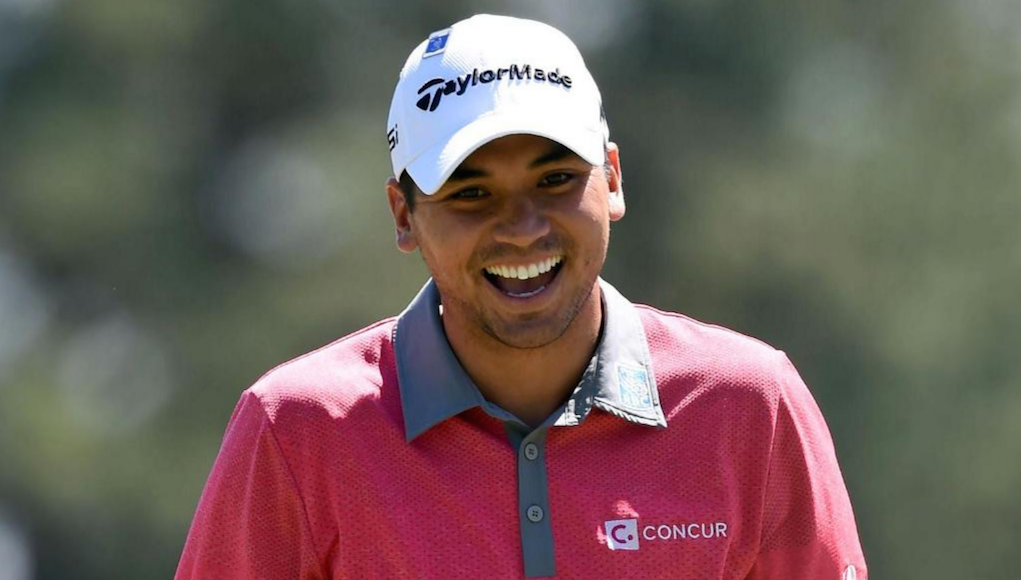Instruction
Emotions run the show in golf

How many times have you heard broadcasters say during a golf tournament, “If Rory or Rickie or Stacey or Inbee can control his (or her) emotions today, they can win this event.” That applies to you and me, too; if you don’t have an answer for your emotions, you’ll struggle to win, or not play as well as you’d like.
I know in my own professional golf career, negative emotions were a major cause of grief. I just didn’t have any answers when emotions spiraled, and started to go from hesitation to confusion to frustration and even anger. I was continually knocked off my focus by lingering negative emotions, and in my opinion, it was a game-changing factor in an inconsistent career.
I think we can all agree that golf is a difficult and an emotional game. In fact, understanding emotions may be more important in golf than any other sport.
Why?
Three main reasons
- You are alone. There are no teammates to take the blame or lean on when you aren’t at your best.
- Time is not your friend. There is far too much time in between shots to mull over what happened or what’s going to happen.
- Chemicals don’t help. Stress hormones like adrenaline and cortisol that can help boost performance in other sports won’t help you in golf.
Check Your Emotional Muscles
How prepared are you to deal with the “emotional hazards” in golf? How much “emotional muscle” do you think you have?
Before I explain some simple biology about emotion in golf, and give you a few ideas to help, click here to take a quick quiz and check the level of your “emotional muscle” to see where you are.
Chances are you need to build your emotional muscles to get to the next level in the game. Working on your swing motion and short game is important, but building emotional muscles will help you leverage all of your talent, work and efforts.
So let’s start…
If you find emotions might be keeping you from better performance, a little understanding about performance and the brain may help you. After all, performance starts in the mind.
Some great work by Dr. Joseph Ledoux of the Centre for Neural Science, New York University and Dr. Daniel Goleman, a Harvard educated Psychologist and author of “Emotional Intelligence” has helped highlight the importance and role of the emotional brain in performance in corporate leadership — and now in sports.
The Alligator and the Computer
Generally, two sections of the brain are important to your game. To keep is simple, let’s call them the alligator and the computer. The alligator, or the emotional brain, is the ancient part that has protected human beings from danger through time. It is what leads to “fight or flight.” When threats arise and you need to escape trouble, the alligator kicks in.
The computer, or the thinking brain, makes the decisions. When the alligator perceives a threat and starts snapping, the computer decides on the level of the threat and the action. Is it important enough to respond?
What does this mean to you and your golf game?
When survival was the daily priority for human beings and reacting to threats was a constant reality, the alligator was a caveman’s best friend. But threats are generally not life threatening today. You’re a golfer, not a caveman, and your brain can’t differentiate between a life-threatening situation and a four-foot putt for par and your best score of the year. Your alligator’s threats are a sudden hook out of bounds, a ball buried in the bunker, three putts, a missed green with a wedge and other golf “threats”.
The Little Troublemaker
There’s a little, almond-shaped part of your brain, the control center of the alligator, called the amygdala. It’s the troublemaker, pushing you around on the golf course and causing you to lose your cool. Even if you play like Rory McIlroy on one shot or one hole, the overstimulated alligator can make you play like Charles Barkley on the next.
When the amygdala “hijacks” your brain and the alligator overrides your computer, the computer responds to the threat, and your ability to reason and think logically are reduced. Your working memory becomes less efficient while your blood pressure, adrenaline and hormone levels rise.
Some great work by Harvard trained Brain Scientist Dr. Jill Bolte Taylor highlights that we can manage responses. Within 90 seconds from the initial trigger, the chemical component of your negative emotion dissolves from the bloodstream and the automatic response is over. The emotion is expressed. So, showing some emotion after a bad shot or bad break isn’t bad. After all, you’re human.
But, what’s important is if you allow the negative emotion to heat up past those 90 seconds, you have chosen to allow the circuit to continue to run. Those 90 seconds gives your brain time to engage the computer which has an inhibitory circuit for the alligator (amygdala). You can then choose a more “performance-friendly” response.
If you allow the circuit to run and the negative emotion to continue, it can take 3-to-4 hours (coincidentally the same amount of time it takes to play a round of golf) for the hormones to clear your system, with the possibility of more hijacks being triggered along the way.
So, simply, the control center of the alligator can undo all of your preparation and sabotage your (and my) golf score. If you’ve ever heard the saying “I was so mad I couldn’t think straight,” this means the alligator is in charge, the computer is over-run and rational decision-making goes out the window. You might know the feeling during a round when things start going south and you can’t reverse it.
Build Your Emotional Muscles
Emotional discipline is like a muscle you can build. In order to build your emotional muscle, here are a few simple ideas that can help you keep the alligator in its cage and make sure the computer is making clear, stress-free decisions.
Know yourself, Know You!
It is very common for you as a golfer to consistently play to your weaknesses and to the course’s strengths. Clearly understand your own strengths, limitations and triggers in the game. What do you do well, what is not so comfortable for you, and what bothers you and triggers a negative reaction?
A lack of awareness can push you to do things you can’t do in your game. How many times have you tried to do things on a golf course that you know you can’t do, but tried them anyway and ended up frustrated and frazzled? Clearly understand what you can and can’t do and always to play to strengths.
The 90-second rule
Tame the alligator with the 90-second rule. The ability to notice what’s going on as it arises, and to slow down before you respond, is a crucial emotional skill. Brain experts tell us an emotion is expressed in about 90 seconds. It’s fine as a golfer to feel and express the emotion within reason in that 90-second window. But, when you feel the emotion building, take a breath and be aware. This awareness will help you control your feelings and soften them before they damage the rest of your game.
Stay in the Moment to Stay Calm
The future and past are distractions for you and stir emotion. Unfortunately, on the golf course there is little you can do about either one. Carrying the past with you will also distract from the current moment and can have a major impact on your execution. Your destiny lies in the present moment. While the future is where your goals and achievements live, you achieve them through playing in the moment.
Emotions are the engine in the vehicle of performance, and the skills associated with building emotional muscle are indispensable to achieving competitive advantage for you in the game of golf.
If you want to enjoy the game more, activate your potential to bring your game to the next level, and be more effective in everything you do, spend some time building your emotional muscles.
References
Bolte-Taylor, Jill (2008). My Stroke of Insight: A Brain Scientist’s Personal Journey. New York, NY: Penguin Group USA.
Goleman, Dr. Daniel, (1995). Emotional Intelligence. New York, NY: Bantam Books.
Ledoux, Dr. Joseph, (1998). The Emotional Brain: The Mysterious Underpinnings of Emotional Life. New York, NY: Simon and Schuster.
- LIKE75
- LEGIT26
- WOW18
- LOL2
- IDHT3
- FLOP3
- OB2
- SHANK7
Instruction
Clement: Laid-off or perfect fade? Across-the-line or perfect draw?

Some call the image on the left laid off, but if you are hitting a fade, this could be a perfect backswing for it! Same for across the line for a draw! Stop racking your brain with perceived mistakes and simply match backswing to shot shape!
- LIKE0
- LEGIT0
- WOW0
- LOL0
- IDHT0
- FLOP0
- OB0
- SHANK0
Instruction
The Wedge Guy: The easiest-to-learn golf basic

My golf learning began with this simple fact – if you don’t have a fundamentally sound hold on the golf club, it is practically impossible for your body to execute a fundamentally sound golf swing. I’m still a big believer that the golf swing is much easier to execute if you begin with the proper hold on the club.
As you might imagine, I come into contact with hundreds of golfers of all skill levels. And it is very rare to see a good player with a bad hold on the golf club. There are some exceptions, for sure, but they are very few and very far between, and they typically have beat so many balls with their poor grip that they’ve found a way to work around it.
The reality of biophysics is that the body moves only in certain ways – and the particulars of the way you hold the golf club can totally prevent a sound swing motion that allows the club to release properly through the impact zone. The wonderful thing is that anyone can learn how to put a fundamentally sound hold on the golf club, and you can practice it anywhere your hands are not otherwise engaged, like watching TV or just sitting and relaxing.
Whether you prefer an overlap, interlock or full-finger (not baseball!) grip on the club, the same fundamentals apply. Here are the major grip faults I see most often, in the order of the frequency:
Mis-aligned hands
By this I mean that the palms of the two hands are not parallel to each other. Too many golfers have a weak left hand and strong right, or vice versa. The easiest way to learn how to hold the club with your palms aligned properly is to grip a plain wooden ruler or yardstick. It forces the hands to align properly and shows you how that feels. If you grip and re-grip a yardstick several times, then grip a club, you’ll see that the learning curve is almost immediate.
The position of the grip in the upper/left hand
I also observe many golfers who have the butt of the grip too far into the heel pad of the upper hand (the left hand for right-handed players). It’s amazing how much easier it is to release the club through the ball if even 1/4-1/2″ of the butt is beyond the left heel pad. Try this yourself to see what I mean. Swing the club freely with just your left hand and notice the difference in its release from when you hold it at the end of the grip, versus gripping down even a half inch.
To help you really understand how this works, go to the range and hit shots with your five-iron gripped down a full inch to make the club the same length as your seven-iron. You will probably see an amazing shot shape difference, and likely not see as much distance loss as you would expect.
Too much lower (right) hand on the club
It seems like almost all golfers of 8-10 handicap or higher have the club too far into the palm of the lower hand, because that feels “good” if you are trying to control the path of the clubhead to the ball. But the golf swing is not an effort to hit at the ball – it is a swing of the club. The proper hold on the club has the grip underneath the pad at the base of the fingers. This will likely feel “weak” to you — like you cannot control the club like that. EXACTLY. You should not be trying to control the club with your lower/master hand.
Gripping too tightly
Nearly all golfers hold the club too tightly, which tenses up the forearms and prevents a proper release of the club through impact. In order for the club to move back and through properly, you must feel that the club is controlled by the last three fingers of the upper hand, and the middle two fingers of the lower hand. If you engage your thumbs and forefingers in “holding” the club, the result will almost always be a grip that is too tight. Try this for yourself. Hold the club in your upper hand only, and squeeze firmly with just the last three fingers, with the forefinger and thumb off the club entirely. You have good control, but your forearms are not tense. Then begin to squeeze down with your thumb and forefinger and observe the tensing of the entire forearm. This is the way we are made, so the key to preventing tenseness in the arms is to hold the club very lightly with the “pinchers” — the thumbs and forefingers.
So, those are what I believe are the four fundamentals of a good grip. Anyone can learn them in their home or office very quickly. There is no easier way to improve your ball striking consistency and add distance than giving more attention to the way you hold the golf club.
More from the Wedge Guy
- The Wedge Guy: Golf mastery begins with your wedge game
- The Wedge Guy: Why golf is 20 times harder than brain surgery
- The Wedge Guy: Musings on the golf ball rollback
- LIKE86
- LEGIT13
- WOW6
- LOL1
- IDHT0
- FLOP4
- OB1
- SHANK8
Instruction
Clement: Stop ripping off your swing with this drill!

Not the dreaded headcover under the armpit drill! As if your body is defective and can’t function by itself! Have you seen how incredible the human machine is with all the incredible feats of agility all kinds of athletes are accomplishing? You think your body is so defective (the good Lord is laughing his head off at you) that it needs a headcover tucked under the armpit so you can swing like T-Rex?
- LIKE0
- LEGIT2
- WOW2
- LOL0
- IDHT0
- FLOP0
- OB0
- SHANK2
-

 19th Hole2 weeks ago
19th Hole2 weeks agoDave Portnoy places monstrous outright bet for the 2024 Masters
-

 19th Hole3 days ago
19th Hole3 days agoJustin Thomas on the equipment choice of Scottie Scheffler that he thinks is ‘weird’
-

 19th Hole2 weeks ago
19th Hole2 weeks agoTiger Woods arrives at 2024 Masters equipped with a putter that may surprise you
-

 19th Hole3 days ago
19th Hole3 days ago‘Absolutely crazy’ – Major champ lays into Patrick Cantlay over his decision on final hole of RBC Heritage
-

 19th Hole3 weeks ago
19th Hole3 weeks agoReport: Tiger Woods has ‘eliminated sex’ in preparation for the 2024 Masters
-

 19th Hole1 week ago
19th Hole1 week agoTwo star names reportedly blanked Jon Rahm all week at the Masters
-

 19th Hole1 week ago
19th Hole1 week agoReport: LIV Golf identifies latest star name they hope to sign to breakaway tour
-

 19th Hole1 week ago
19th Hole1 week agoNeal Shipley presser ends in awkward fashion after reporter claims Tiger handed him note on 8th fairway






















John Haime
Apr 5, 2015 at 11:09 pm
Hi Bernard,
Yes, the 90 second rule is helping alot of athletes – recreational and professional. Really be aware of what can trigger the negative emotion, express it and quickly move your focus to what needs to be done to perform well on the next shot. As I mentioned above, mistakes are a big part of golf and it’s very difficult to control when a mistake will happen. But, you can control if you compound the mistake by managing your responses.
This will help you enjoy the game more and, in the long-term, really help your performances.
Ned J
Apr 5, 2015 at 8:11 pm
“Keep your alligator in its cage” – Thats brilliant! Definitely going to give this a try in my game.
John Haime
Apr 5, 2015 at 10:45 pm
Thanks for the comment Ned.
Yes, think about keeping that ancient part of your brain from taking over. Golfers don’t have to be robots – you can express emotion – but managing that 90 seconds is important. You’ll have more fun playing – and will really keep you balanced on the course. Mistakes are a big part of the game – they will happen – but compounding mistakes is something you can control.
Tom Duckworth
Apr 5, 2015 at 2:54 pm
This is just what I have been thinking about lately. I decided this is what I need to work on to take that next step in my game. No pressure on the range just work on the swing. I love doing that. Hit a bad shot, no problem just figure it out and hit again until it’s right.
How many times do we go to the driving range and hit the ball like a champ only to wonder why we don’t take that game to the course? No penalties (no alligators) on the range.
John Haime
Apr 5, 2015 at 10:50 pm
Stay with us over the coming months Tom and I’ll help you really take your game from the practice tee to the course.
Golfers have two choices – either intensify your practice or change the intensity on the course. It’s important that the feelings on the practice tee parallel feelings on the course. Most players are very loose on the practice tee and then can’t adjust to the mindset required on the course “when it counts.”
Mike J
Apr 5, 2015 at 1:35 am
I think this article is a hit. I like your quiz, and found it very itneresting. Obviously we all go out there for the fun of golf, and if we can remember that, I think it helps with the emotions. That being said, nothing ruins competition like (subjective) poor performance.
John Haime
Apr 5, 2015 at 10:55 pm
thanks for the comment Mike – pleased you liked the quiz. It’s a simple exercise to highlight what you might need to work on and to create some awareness about levels of emotional muscle.
I agree that we must keep golf in perspective. Enjoyment must be the priority – when we enjoy something – it is often reflected in the performance. Just think about JB Holmes this week – I’m sure he is bringing great perspective to the game after life-threatening brain surgery not long ago. He’s loving his time on the course and that is reflected in his results.
jim
Apr 4, 2015 at 9:18 pm
dufner stays calm on the course and hes got one more major than most guys on tour
John Haime
Apr 5, 2015 at 10:58 pm
Hi Jim,
Emotion is OK – we are all human and golf is a very human game. But, we must manage the emotion and stay balanced. Frustration and anger can really destroy performance if we allow it.
I agree that a very calm approach has helped Jason in the majors.
Double Mocha Man
Apr 4, 2015 at 4:30 pm
“You are alone. There are no teammates to take the blame or lean on when you aren’t at your best.”
But if you’re Bubba Watson you can blame and berate your caddie.
John Haime
Apr 5, 2015 at 11:03 pm
Hi DMM …
Thanks for the comment. Interesting observation about Bubba. I agree that this type of behavior directed to caddies crosses the line and emotions get the best of the player. I have seen it happen with a number of players. You could certainly say emotions get the best of the player at this time – an amygdala hijack – and it often results in poor performance.
Bubba has obviously found a sweet spot for himself at tournaments like Augusta – his manner is calm and he is really able to play “Bubba Golf”.
Bernard
Apr 4, 2015 at 12:52 pm
I find the 90 second thing pretty interesting. I will utilize this on the course, especially when I ‘prepared’ and things are not panning out.